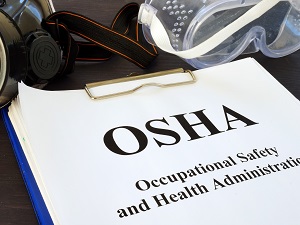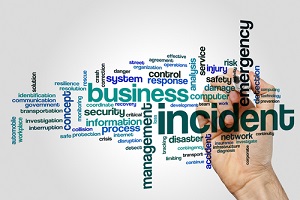When incidents happen in the workplace, employers have several responsibilities. Follow these steps to ensure that you cover all bases for any workplace injury incident.

The way that an employer responds to incidents that happen in the workplace can make a huge difference for the future of the organization’s safety program. By following the steps outlined below you can ensure an injured worker receives the best possible care, your organization prevents similar incidents from occurring in the future and your safety program becomes even more robust and comprehensive moving forward.
1. Attend to the Injured First
The Occupational Safety and Health Administration (OSHA) states that first aid supplies and staff training should be commensurate with the hazards present in the work environment. Management should make sure that supplies and training are in place to deal with any incidents that can reasonably be expected to occur. The most immediate concern is to attend to anyone who got hurt. This procedure should be carefully outlined and will depend on the resources in the workplace.
If a business is large enough to be legally required to employ medical staff, they should be called, or the injured parties should be taken to their offices. The medical officer or designated senior staff member, should determine whether the situation is an emergency or not. If it’s an emergency, 911 should be called. First aid should be administered until the emergency medical responders arrive, and the type of aid will depend on the specific situation.

2. Secure the Scene
All serious incidents will need to be properly investigated, so the scene needs to be secured as quickly, and with as little disturbance, as possible. This is the next priority, once everything that can be done for the injured parties has been seen to.
The area might need to be cordoned off or restricted in another way to limit access. This is important not only to minimize evidence contamination, but also to preserve as much equipment and materials as possible, and to avoid any secondary incidents.

3. Complete and File the Required Paperwork
Once the immediate situation has been dealt with to the best of you and your team’s ability, the next step is to complete the proper paperwork. You’ll need to complete an incident report and to notify your workers’ compensation insurance provider within 24 hours.
The OSHA Injury and Illness Recordkeeping and Reporting Requirements stipulate that employers prepare and maintain work-related injury and illness records using the OSHA form 300. Some workers’ compensation carriers have dedicated programs to guide clients through this procedure, so check if yours does. If not, it’s recommended that you get professional advice from your insurance agent.

4. Establish a Return-to-Work Program
Even minor sprains and strains can result in weeks or even months off the job, and the longer an employee is away, the more difficult it can be for them when they return. To help them get back into the rhythm of the workplace as quickly and safely as possible it’s a good idea to implement a return-to-work program with modified duties to ease the transition.
Once someone has been medically cleared to come back to work but is unable - or not yet able -to fulfill their previous responsibilities, the modified jobs can be introduced. They can be similar to an employee’s previous work, or quite different – and even be in an entirely new department. The number of hours an individual performs in their return-to-work program will also need to be decided on a case-by-case basis.
These transitional roles keep workers off long-term disability and can potentially lower your costs as an employer. In addition, your business benefits from keeping an experienced staff member on site while preserving your employee’s skills, confidence and emotional connection with the company.

5. Review the Incident
Once official reports have been filed and investigations have been completed, take a close look at what happened. Try to understand exactly what went wrong, and why. Review all the work that has already been done on the incident and talk to as many witnesses as possible. This will also help with workplace morale as employees will feel they are making a valuable contribution to your efforts.
Look at past event reports too and check if any similar incidents have happened before. As you conduct your review, focus on preventing future incidents rather than apportioning blame. This will further enhance morale and foster a positive atmosphere on the floor.

6. Make Any Necessary Changes to Protocols
The most important issue here is to keep employees as safe and healthy when they’re at work as possible and to always meet compliance standards. OSHA stipulates that all reasonable measures be taken to ensure this, and the concept of company-wide culture that prioritizes health and safety is gaining considerable momentum.
With that in mind, once the incident has been thoroughly reviewed, employers need to show their commitment to good health and safety standards by making any necessary changes to their policies. For example, if the incident occurred because a machine wasn’t working properly and requires more regular maintenance, that should be written into company policy.
By providing proper occupational health and safety measures, business owners can show their staff members that they are valued and respected. Discussing the situation and what improvements need to be made takes that idea even further, empowering them and creating a united team. When this happens, safety culture spreads through the entire organization creating a workforce that is both protected and productive.


.jpeg)
